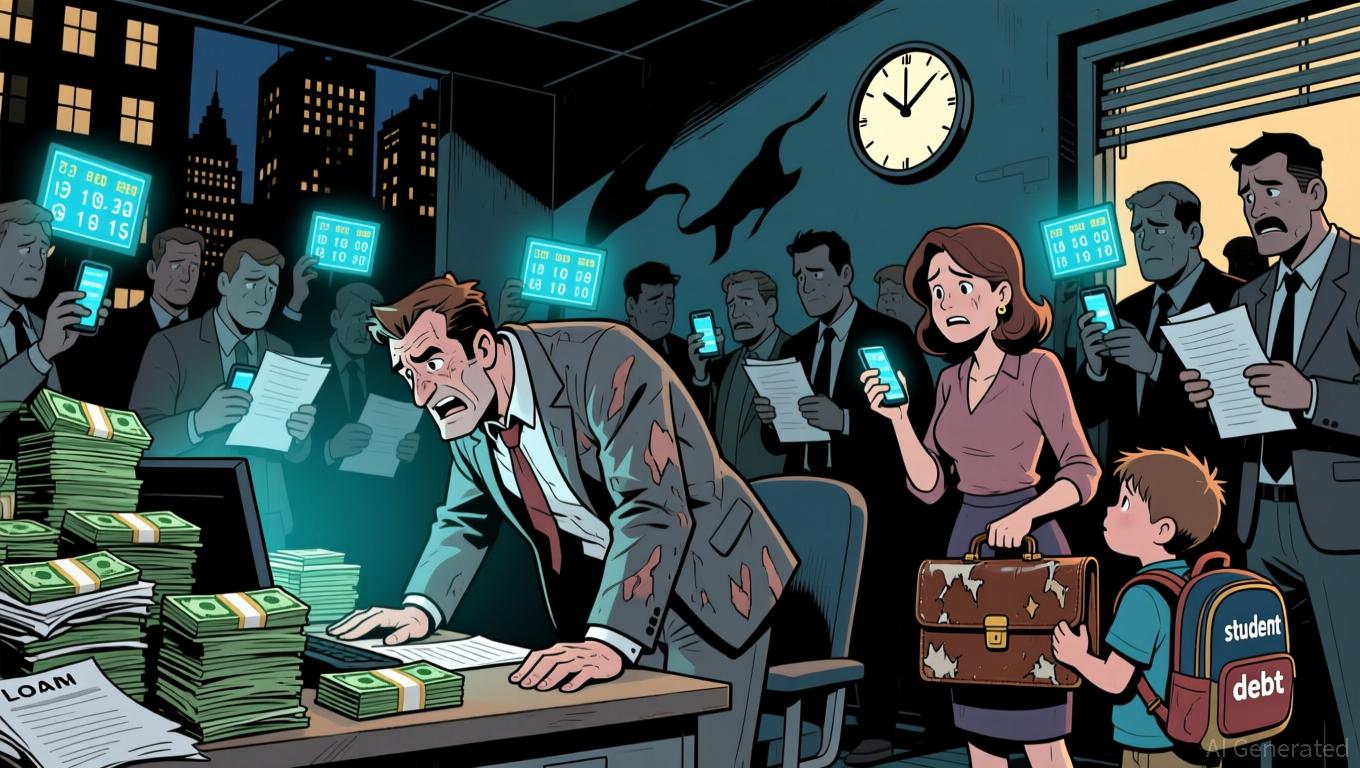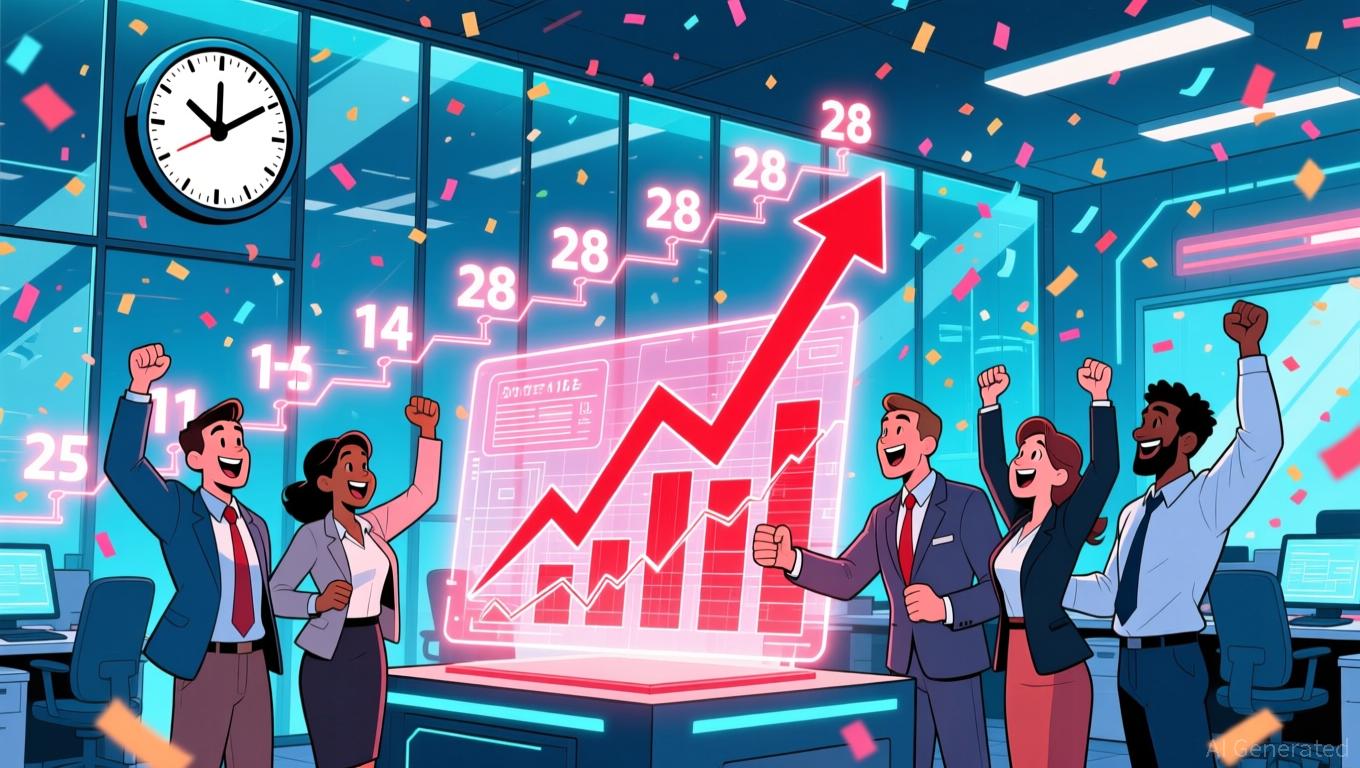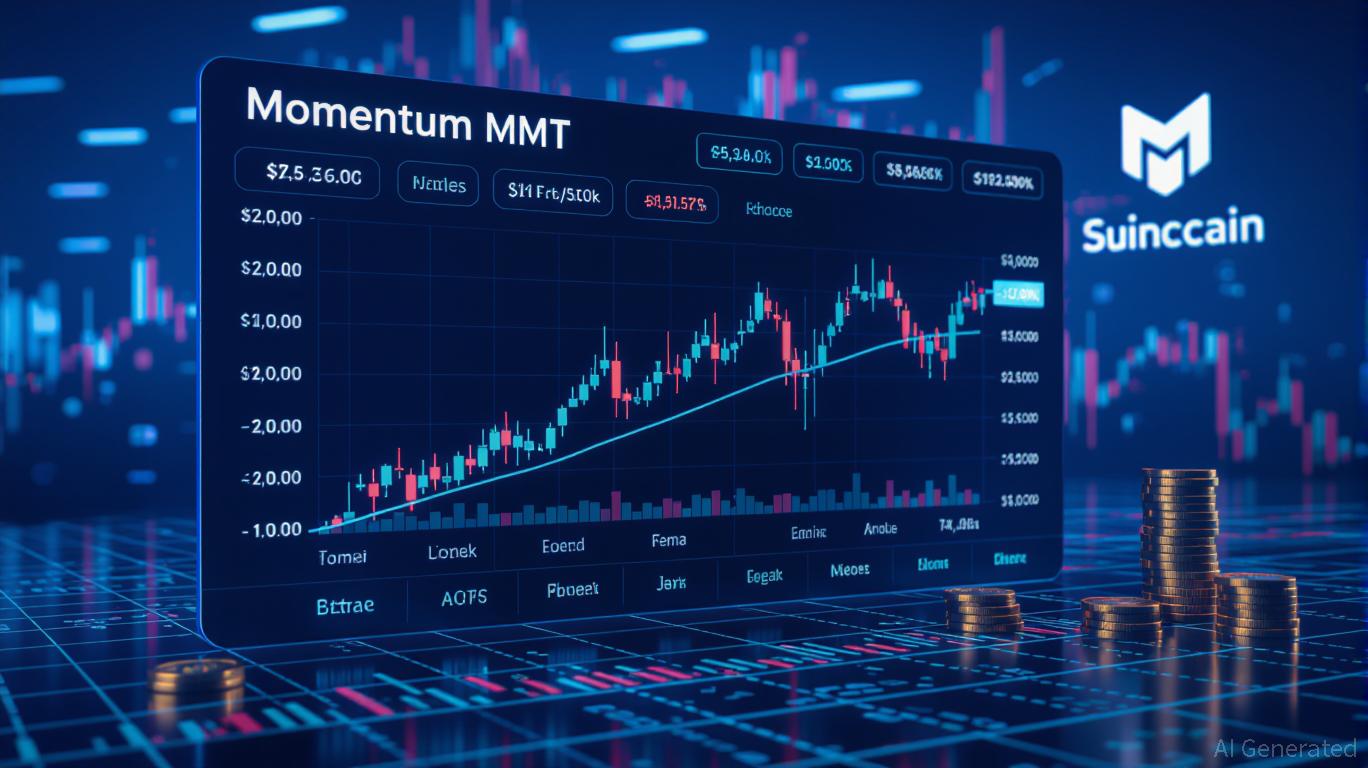Fed Faces a Choice: Boost Growth or Curb Mounting Debt?
- U.S. household debt hit $18.59 trillion in Q3 2025, driven by rising credit card, student loan, and home equity debt with delinquency rates at multi-year highs. - The Fed initiated rate cuts amid slowing job growth but faces a dilemma: easing economic strain risks inflating a consumer debt bubble while tightening worsens defaults. - Retailers, banks, and auto lenders face fallout as discretionary spending declines and loan defaults rise, while essential goods and debt collectors see increased demand. - P
As of the third quarter of 2025, American families are shouldering a record-breaking $18.59 trillion in debt, marking a $197 billion increase from the previous quarter, according to

The Federal Reserve’s recent shift toward lowering rates, with a projected total reduction of 75 basis points in 2025, signals its growing concern about the economic strain from rising debt, the report continues. Still, experts caution that reducing rates may not significantly ease the pressure from existing high-interest obligations. “The Fed is in a precarious position,” one economist commented, explaining that while rate cuts could encourage more borrowing for homes and businesses, they also risk further inflating the consumer debt bubble, according to the analysis.
This surge in debt is prompting companies—especially in retail, finance, and automotive industries—to rethink their strategies. Retailers selling non-essential goods, such as luxury brands and travel services, are seeing demand drop as families focus on necessities, the FinancialContent article notes. Meanwhile, traditional banks and credit card companies are preparing for a rise in loan defaults.
On the other hand, retailers specializing in essentials like Walmart and Costco continue to see steady demand, and companies in healthcare and utilities remain largely unaffected by shifts in consumer spending. Debt collection firms and lenders with varied sources of income are also profiting from the uptick in delinquencies.
The Federal Reserve’s predicament reflects wider global patterns. While mortgage loans remain relatively healthy due to strong home equity, the increase in non-mortgage delinquencies points to an uneven recovery. The central bank’s Financial Stability Report identifies high business debt and rising consumer loan defaults as major systemic threats, leading to calls for more targeted policy responses, the report says.
Looking forward, forecasts suggest the U.S. economy will expand by just 1.7% in 2025 and 1.4% in 2026, with inflation rates averaging 2.9% and 3.2% respectively, according to the analysis. The Fed’s anticipated rate cuts, expected to lower the federal funds rate to between 3.50% and 3.75% by late 2026, are intended to support a weakening job market while keeping inflation in check. However, ongoing tariffs and policy uncertainties could complicate these efforts.
The Federal Reserve’s upcoming decisions will depend on critical economic data. Reports on manufacturing and retail sales, due in early November, may influence future rate changes, according to the
With the debt crisis worsening, investors are watching delinquency rates and Fed policy closely. The next few months will be a test of the central bank’s ability to steer the economy through these challenges without triggering a wider financial downturn, the FinancialContent report concludes.
Disclaimer: The content of this article solely reflects the author's opinion and does not represent the platform in any capacity. This article is not intended to serve as a reference for making investment decisions.
You may also like
Defying Market Swings: $NNZ's Tactical Approach to Crypto
- Bitget report highlights Noomez's $NNZ token as a 2025 bull run contender with 280x price potential via its 28-stage presale model. - Deflationary mechanics include token burns at key milestones, 15% locked liquidity, and double staking rewards for early adopters. - Community-driven features like "Noom Recruit" referral program and transparent Noom Gauge dashboard aim to build trust and adoption. - Analysts note $NNZ's structured approach addresses meme coin volatility while aligning with 2025 trends fav

Growing Institutional Focus on Momentum (MMT)
- Momentum (MMT) token surged 1330% post-Binance listing, driven by $10M funding and institutional backing from Coinbase , OKX, and Jump Crypto. - On-chain data shows $12B 30-day DEX volume and $265M TVL, but analysts warn of speculative risks amid 224% 24-hour volatility spikes. - Institutional capital shifts toward Bitcoin/ETH staking ($6.1B combined inflows) raise questions about MMT's long-term viability without proven real-world utility. - Upcoming ve(3,3) DEX and RWA integrations aim to enhance MMT's

AAVE -3.37% 7-Day Surge Despite Year-Long Downtrend as Market Integrates
- Aave's AAVE token fell 0.89% in 24 hours to $207.68 despite a 3.37% 7-day rally amid strategic integrations. - Aave Horizon's partnership with VanEck's VBILL tokenized Treasury fund enables institutional-grade collateral via Chainlink and Securitize infrastructure. - The integration creates arbitrage opportunities with 4.84%+ potential returns through VBILL collateralized RLUSD borrowing strategies. - Backtests show Aave outperformed BTC by +14.54% over 30 days post-announcement, with 67% positive excess
Kyo Achieves $1 Billion Valuation: Wagering on Cross-Chain DeFi Integration During Industry Upheaval
- Kyo Finance secures $5M Series A at $1B valuation, aiming to unify blockchain liquidity via cross-chain interoperability. - DeFi faces innovation vs. security tensions as projects like Mutuum advance infrastructure while crises like Stream Finance's $93M loss expose systemic risks. - Industry responds with risk mitigation tools (e.g., RedStone ratings) and modular infrastructure reforms to address contagion risks from interconnected lending markets. - Kyo's valuation reflects institutional confidence in